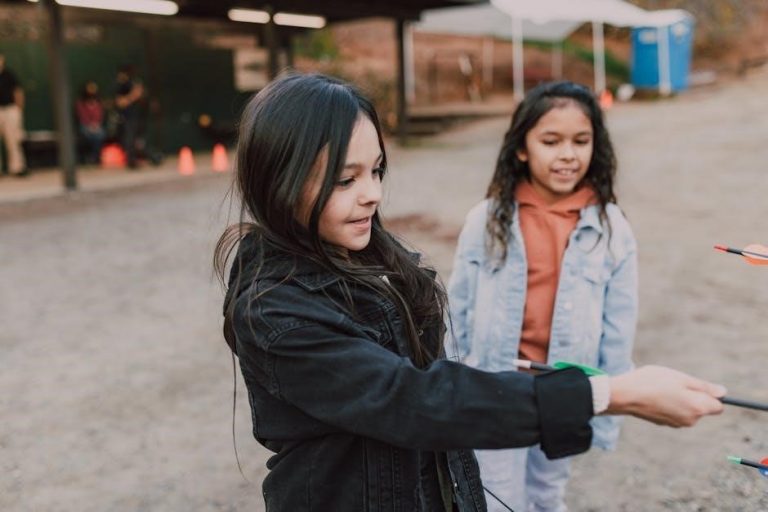Colorado offers exceptional guided mule deer hunting experiences, renowned for its abundant population and diverse landscapes․ With vast public lands and expert guides, hunters can maximize success rates while enjoying a memorable adventure in the Rockies․
Why Colorado is a Premier Destination for Mule Deer Hunting
Colorado is renowned for its robust mule deer population and diverse terrain, offering ideal habitats from montane forests to grasslands․ With millions of acres of public land and expert guides, it provides unparalleled access and opportunities for hunters․ The state’s thriving wildlife and guided tours make it a top choice for mule deer enthusiasts․
The Geographic and Climatic Advantages for Mule Deer
Colorado’s varied landscape, including vast wilderness areas and rolling hills, provides mule deer with optimal habitat․ The state’s temperate climate, with cold winters and mild summers, supports healthy deer populations․ Abundant forage and water sources ensure thriving herds, making Colorado a prime destination for mule deer hunting year-round․
Best Times of the Year for a Guided Mule Deer Hunt
The ideal seasons for guided mule deer hunting in Colorado are during archery season in late summer and rifle seasons in fall․ The peak rut typically occurs in late September to early October, offering prime opportunities to spot and harvest trophy bucks․ Late-season hunts can also be productive as deer congregate in lower elevations․
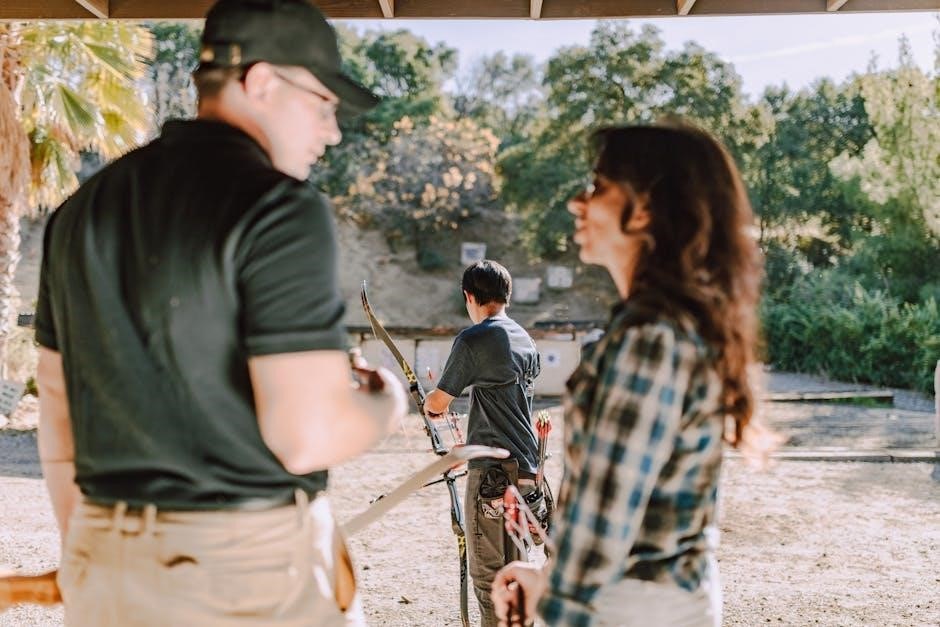
Understanding Guided Mule Deer Hunt Tours
Guided mule deer tours in Colorado offer expert guidance, local terrain knowledge, and proven strategies to enhance your hunting experience, ensuring a safe and successful adventure in the Rockies․
What to Expect from a Guided Hunt Experience
A guided mule deer hunt in Colorado offers a well-organized adventure, starting with pre-hunt preparation and expert guidance․ Experienced guides provide local knowledge, ensuring optimal chances of success․ Expect hands-on assistance with spotting, stalking, and harvesting deer, along with a focus on safety and ethical hunting practices․ The experience fosters camaraderie and creates lifelong memories․
Different Types of Guided Hunts: DIY vs․ Fully Guided
Guided mule deer hunts in Colorado vary between DIY and fully guided options․ DIY hunts offer independence with minimal assistance, appealing to experienced hunters․ Fully guided tours provide comprehensive support, including scouting, transportation, and expert guidance, ideal for those seeking a hassle-free, high-success-rate experience tailored to their skill level and preferences․
Benefits of Hiring a Professional Guide
Hiring a professional guide enhances your mule deer hunting experience in Colorado․ Guides offer local expertise, knowledge of deer behavior, and access to prime locations, maximizing your chances of success․ They handle logistics, ensuring a seamless experience, and provide valuable insights, making your hunt more productive and enjoyable, especially for less experienced hunters․
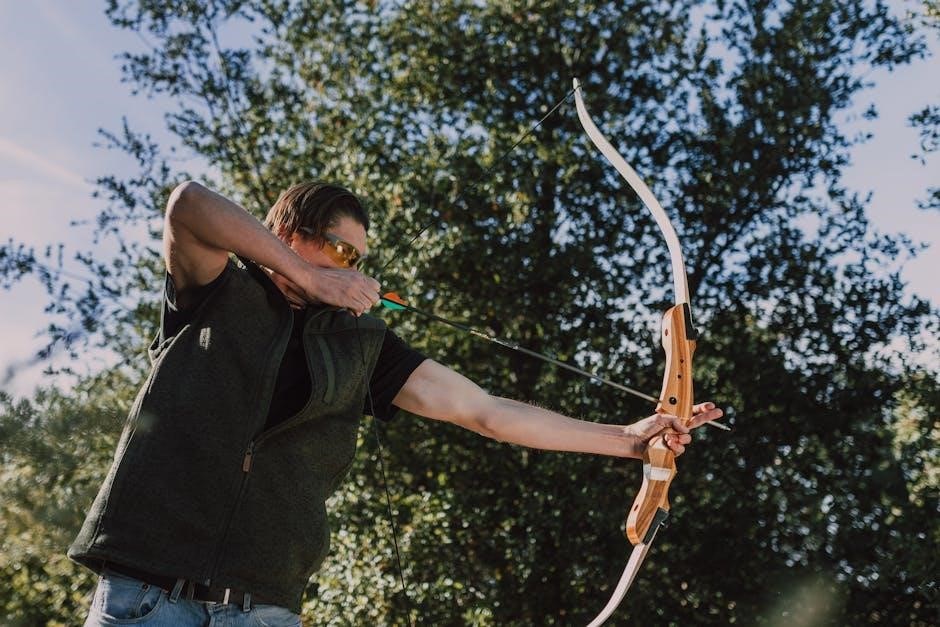
Regulations and Licensing for Mule Deer Hunting in Colorado
Understanding Colorado’s hunting regulations is crucial for a legal and ethical mule deer hunt․ Licenses, tag requirements, and season dates vary, with specific rules for residents and non-residents, ensuring sustainable wildlife management and fair access to hunting opportunities across the state’s diverse regions․
Overview of Colorado’s Hunting Regulations
Colorado’s hunting regulations are designed to ensure sustainable wildlife populations and fair access․ Season dates, bag limits, and license requirements are set annually․ Hunters must obtain proper tags, with options for over-the-counter (OTC) and limited draw licenses․ Non-residents face specific fees and restrictions, emphasizing conservation and ethical practices to preserve mule deer herds and habitats․
Understanding OTC Tags vs․ Draw System
OTC tags allow immediate purchase for specific seasons, offering flexibility for hunters․ The draw system requires applicants to enter a lottery for limited licenses, often in high-demand areas․ OTC tags are ideal for DIY hunters, while the draw system targets trophy units, balancing access with conservation goals to maintain healthy mule deer populations and sustainable hunting opportunities․
Licensing Requirements for Non-Residents
Non-residents must purchase a Colorado hunting license and mule deer permit․ Costs are higher than for residents, varying by season and permit type․ Non-residents may apply through the draw system or use OTC tags for certain seasons․ Additional habitat stamps or fees may apply, ensuring conservation efforts while providing access to premier hunting opportunities in Colorado․
Private Land Access and Permissions
Accessing private land for mule deer hunting in Colorado often requires landowner permission․ Guides often have established relationships, easing access for hunters․ Some properties are enrolled in programs like Colorado’s Public Access Program, allowing limited hunting access․ Obtaining permission ensures legal and ethical hunting practices while respecting landowners’ rights․
Preparing for Your Guided Mule Deer Hunt
Preparation is key to a successful hunt․ Focus on physical conditioning, mental readiness, and gathering essential gear․ Pre-hunt scouting and strategic planning with your guide ensure a well-organized adventure․
Physical Conditioning and Mental Preparation
Building endurance and strength is crucial for navigating Colorado’s rugged terrain․ Engage in cardio exercises like hiking and strength training to prepare for long days in the field․ Mentally, stay focused and patient, as mule deer hunting demands persistence․ A well-prepared mind and body enhance your chances of a successful and enjoyable hunt․
Essential Gear and Equipment Checklist
Pack a reliable rifle, high-quality optics, and durable camouflage clothing tailored for Colorado’s weather․ Include sturdy hiking boots, a first-aid kit, and navigation tools like GPS or a compass․ Bring layers for varying temperatures and a hydration system to stay prepared during extended hunts in the diverse Colorado terrain․
Pre-Hunt Scouting and Planning
Identify mule deer habitats, game trails, and feeding areas using binoculars and maps․ Study deer behavior patterns and consult with guides for insights․ Plan routes and vantage points, ensuring access to remote areas․ Effective scouting maximizes hunting success by locating trophy bucks and understanding their movement, crucial for a productive Colorado mule deer hunt experience․
Choosing the Right Guide Service
Selecting an experienced guide service is crucial for a successful mule deer hunt in Colorado․ Look for reputable outfitters with skilled guides, ensuring a safe and memorable hunting experience․
Researching Reputable Outfitters
Researching reputable outfitters is essential for a successful guided hunt․ Look for experienced guides with proven track records and high success rates․ Check online reviews, ask for references, and ensure they are licensed and insured․ A good outfitter will provide clear communication, personalized attention, and a deep knowledge of Colorado’s mule deer habitat․
Experience and Success Rates of Guides
Seasoned guides with extensive experience in Colorado’s terrain and mule deer behavior significantly enhance hunting success․ Look for guides with high success rates, proven track records, and deep knowledge of local habitats․ Their expertise in stalking, calling, and positioning ensures a higher likelihood of harvesting a trophy buck, making their experience invaluable to hunters․
Cost Considerations and What’s Included
Guided mule deer hunts in Colorado vary in cost, typically ranging from $2,000 to $10,000, depending on the duration and services offered․ Most packages include professional guidance, meals, lodging, and field transportation․ Ensure clarity on what’s included, such as licenses, gear, and trophy handling, to avoid additional expenses and ensure a seamless hunting experience․
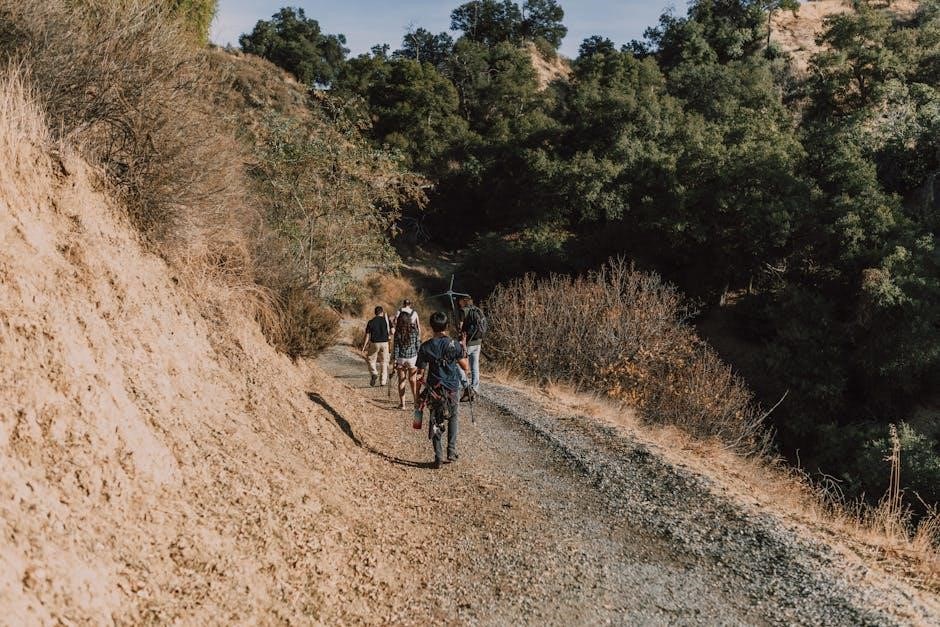
Top Locations for Mule Deer Hunting in Colorado
Colorado’s diverse terrain offers prime spots for mule deer hunting, with public lands and remote areas providing abundant opportunities for both trophy and meat hunters to succeed․
Prime Public Lands for Mule Deer
Colorado’s expansive public lands, including national forests and Bureau of Land Management areas, offer prime habitats for mule deer․ Regions like the White River National Forest and the Uncompahgre Plateau are known for their abundant herds, making them ideal destinations for both archery and rifle hunting experiences in scenic, untouched environments․
Best Regions and Units for Trophy Hunting
Colorado’s western regions, particularly Units 61, 62, and 70, are renowned for trophy mule deer hunting․ Areas like the Flat Tops Wilderness and the San Juan Mountains offer prime habitat, while guided tours in these regions often lead to successful harvests of large bucks, making them top choices for serious trophy hunters․
Accessing Remote Areas for Better Hunting
Remote areas in Colorado, such as high-altitude meadows and aspen groves, often hold larger mule deer herds․ Guides frequently use ATVs, horses, or hike to reach these secluded spots․ These regions offer less hunting pressure, increasing chances of encountering trophy bucks․ Hunters should prepare for physical challenges and rugged terrain when exploring these areas․
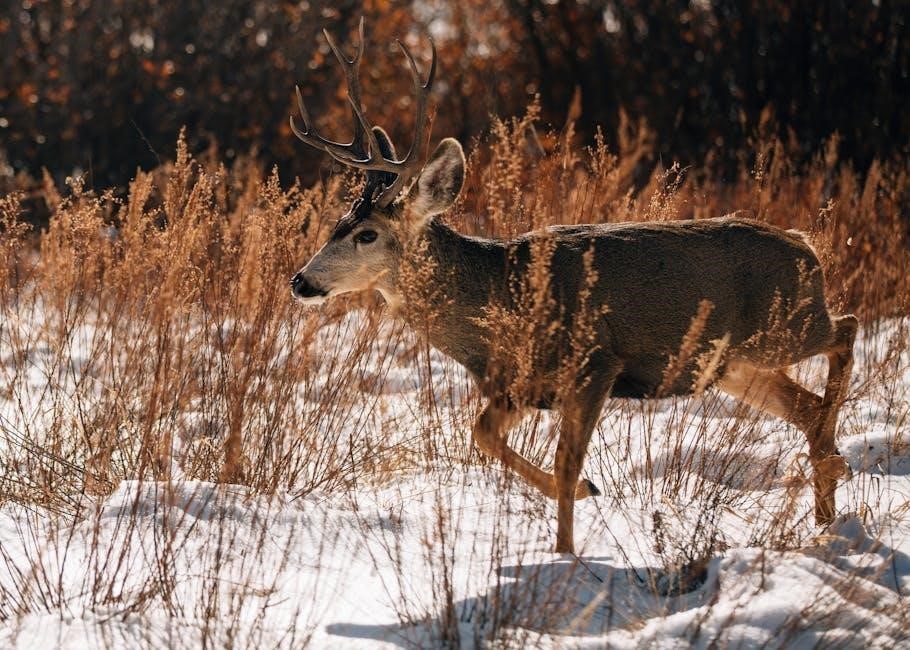
Tips for a Successful Hunt
Spotting mule deer early, using optics for long-range scouting, and maintaining patience are key strategies․ Effective communication with guides and adapting to changing conditions also enhance success rates significantly․
Effective Strategies for Spotting Mule Deer
Scan open areas and ridges with binoculars for movement․ Focus on habitats like saddles, creek bottoms, and feeding zones․ Glass during early morning and late evening when deer are most active․ Stay patient, as spotting can take time․ Adapt to wind direction and use cover to avoid detection, increasing your chances of success․
Using Optics for Long-Range Scouting
High-quality binoculars (10×42 or 12×50) and spotting scopes (20-60x) are essential for spotting mule deer at long ranges․ Scan open areas, ridges, and valleys systematically․ Use a tripod for stability and clarity․ Glass during early morning and late evening when deer are most active․ Adjust for distance and light conditions to locate animals effectively․
Patience and Persistence in the Field
Success in mule deer hunting demands patience and persistence․ Spend hours glassing and waiting for deer to appear․ Stay calm and focused, even during long periods of inactivity․ Persistent effort often leads to rewarding encounters, making the time invested worthwhile in Colorado’s vast and challenging terrain․

Budgeting for Your Guided Hunt
Budgeting for a guided mule deer hunt in Colorado involves considering costs like guide fees, licenses, gear, and travel․ Plan accordingly to ensure a seamless experience․
Breaking Down the Costs of a Guided Hunt
A guided mule deer hunt in Colorado typically includes expenses such as guide fees, which can range from $2,000 to $5,000, depending on the duration and type of hunt․ Additional costs include licensing fees, gear rentals, and travel expenses, which should be factored into your overall budget to ensure a smooth experience․
Additional Expenses to Consider
Beyond guide fees, hunters should budget for travel, accommodations, and gear․ Transportation to and from the hunting area, lodging, and equipment rentals or purchases add to the total cost․ Licenses, permits, and potential taxidermy services are also expenses to consider when planning a guided mule deer hunt in Colorado․
Planning Your Hunting Budget Effectively
Start by breaking down all potential costs, including guide fees, licenses, and gear․ Prioritize expenses based on necessity and allocate funds accordingly․ Consider hidden fees, taxes, and unexpected costs․ Plan ahead to avoid budget oversights and ensure a smooth, enjoyable hunting experience in Colorado’s stunning mule deer habitats․
Safety and Ethics in Mule Deer Hunting
Safety and ethical practices are paramount in mule deer hunting․ Always follow firearm safety guidelines, respect wildlife, and practice fair chase to ensure sustainable and responsible hunting experiences․
Importance of Hunter Safety and Ethics
Hunter safety and ethics are crucial for responsible mule deer hunting․ Adhering to firearm safety, respecting wildlife, and following regulations ensure a sustainable and ethical hunt․ Experienced guides emphasize safe practices, promoting a balance between harvest success and environmental preservation, while fostering respect for nature and wildlife․
Respecting Wildlife and the Environment
Respecting wildlife and the environment is vital for sustainable hunting practices․ Hunters must minimize ecological impact by following regulations, avoiding overharvesting, and preserving natural habitats․ Ethical hunting ensures the survival of mule deer populations, maintaining Colorado’s pristine wilderness for future generations while promoting harmony between humans and wildlife․
Emergency Preparedness in the Field
Always carry a first-aid kit, communication devices, and know emergency protocols․ Familiarize yourself with the terrain and weather conditions to prevent accidents․ Stay informed about potential hazards like wildlife encounters or extreme weather․ A well-prepared hunter ensures safety and can respond effectively in critical situations, minimizing risks during the hunt․
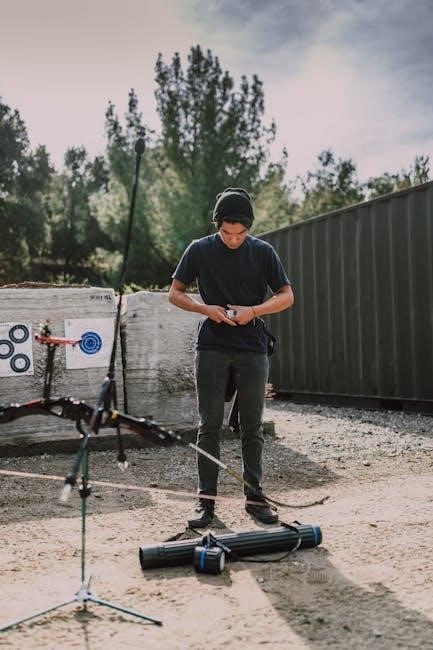
Gear and Equipment for Mule Deer Hunting
Essential gear includes a reliable rifle, high-quality optics, durable clothing, and sturdy footwear․ Proper equipment ensures accuracy, comfort, and success during the hunt in Colorado’s challenging terrain and conditions․
Choosing the Right Rifle and Ammunition
Selecting the right rifle and ammunition is crucial for a successful mule deer hunt․ Calibers like ․243 Winchester or ․30-06 Springfield are popular choices, offering accuracy and sufficient power․ Ensure ammunition matches the rifle for optimal performance and ethical harvesting․ Consult with guides to determine the best setup for Colorado’s terrain and conditions․
Optics and Scopes for Accuracy
High-quality optics are essential for accurate long-range shooting․ A scope with 4-12x magnification is ideal for Colorado’s vast terrain․ Look for durable, water-resistant models with a 40-50mm objective lens for clarity․ Properly sighting in your rifle and scope ensures precision, while adjustable reticles and parallax settings enhance accuracy in varying conditions․
Appropriate Clothing and Camouflage
Wear layers of moisture-wicking, breathable clothing suitable for Colorado’s unpredictable weather․ Opt for earth-toned camouflage patterns like Mossy Oak or Realtree to blend into the terrain․ A good pair of sturdy, waterproof boots is essential for rugged terrain․ Ensure clothing minimizes noise and scent to avoid spooking deer, enhancing your stealth in the field․
A guided mule deer hunt in Colorado offers an unforgettable experience with world-class guides and stunning landscapes․ Plan carefully, embrace the adventure, and create lifelong memories in the Rockies․
Final Thoughts on Planning Your Hunt
Thorough research, budgeting, and preparation are key to a successful hunt․ Ensure you understand licensing requirements and scout locations in advance․ Physical conditioning and mental readiness are essential for the challenging terrain․ Prioritize safety, ethics, and environmental respect to make your guided mule deer hunt in Colorado a memorable and responsible experience․
Maximizing Your Guided Hunt Experience
Communicate openly with your guide to tailor the hunt to your goals and preferences․ Stay prepared, adaptable, and patient, as mule deer hunting demands persistence․ Utilize your guide’s expertise and high-quality gear to increase success․ Embrace the adventure, immerse yourself in Colorado’s stunning landscapes, and cherish the memorable moments both in and out of the field․
